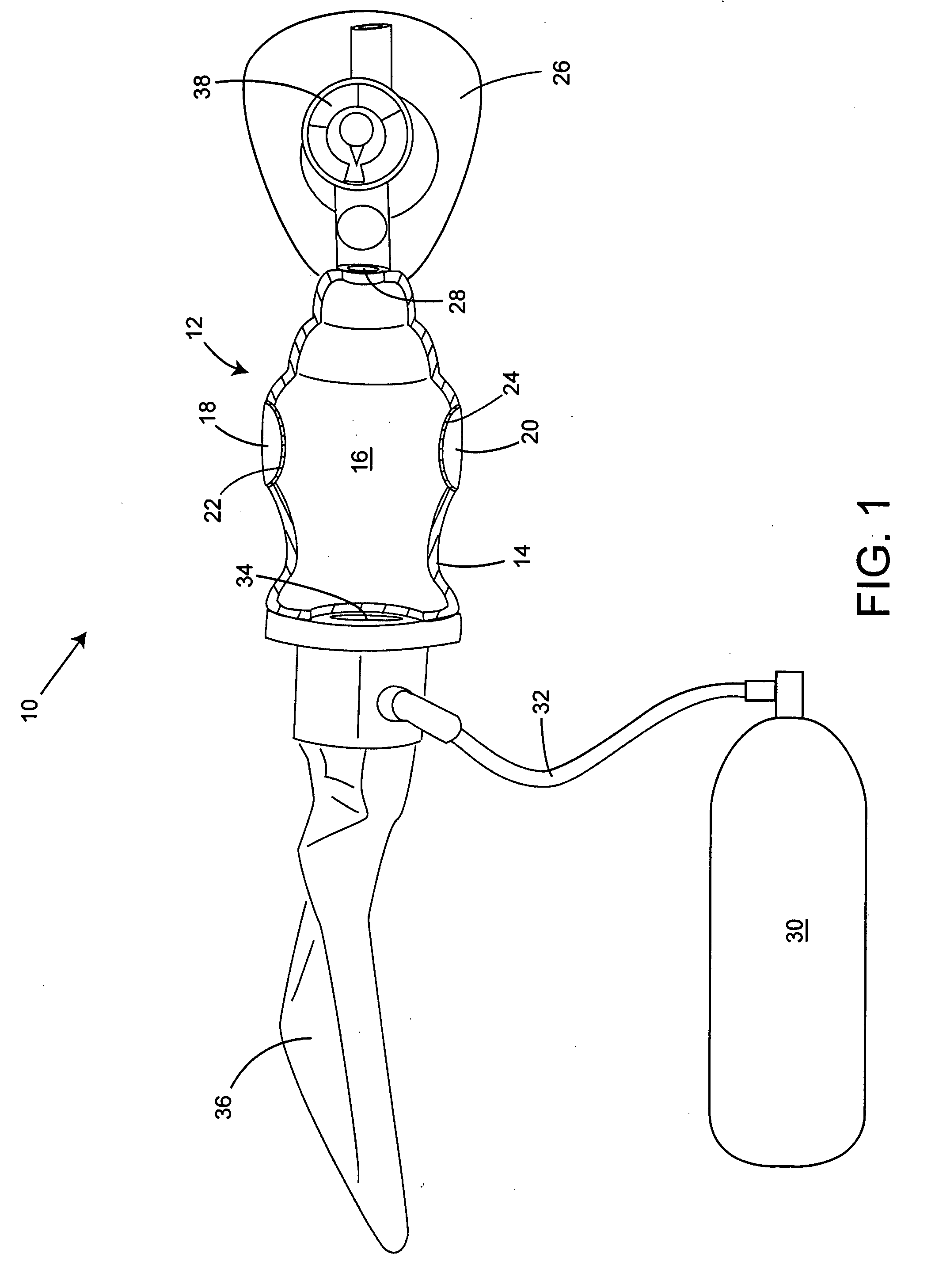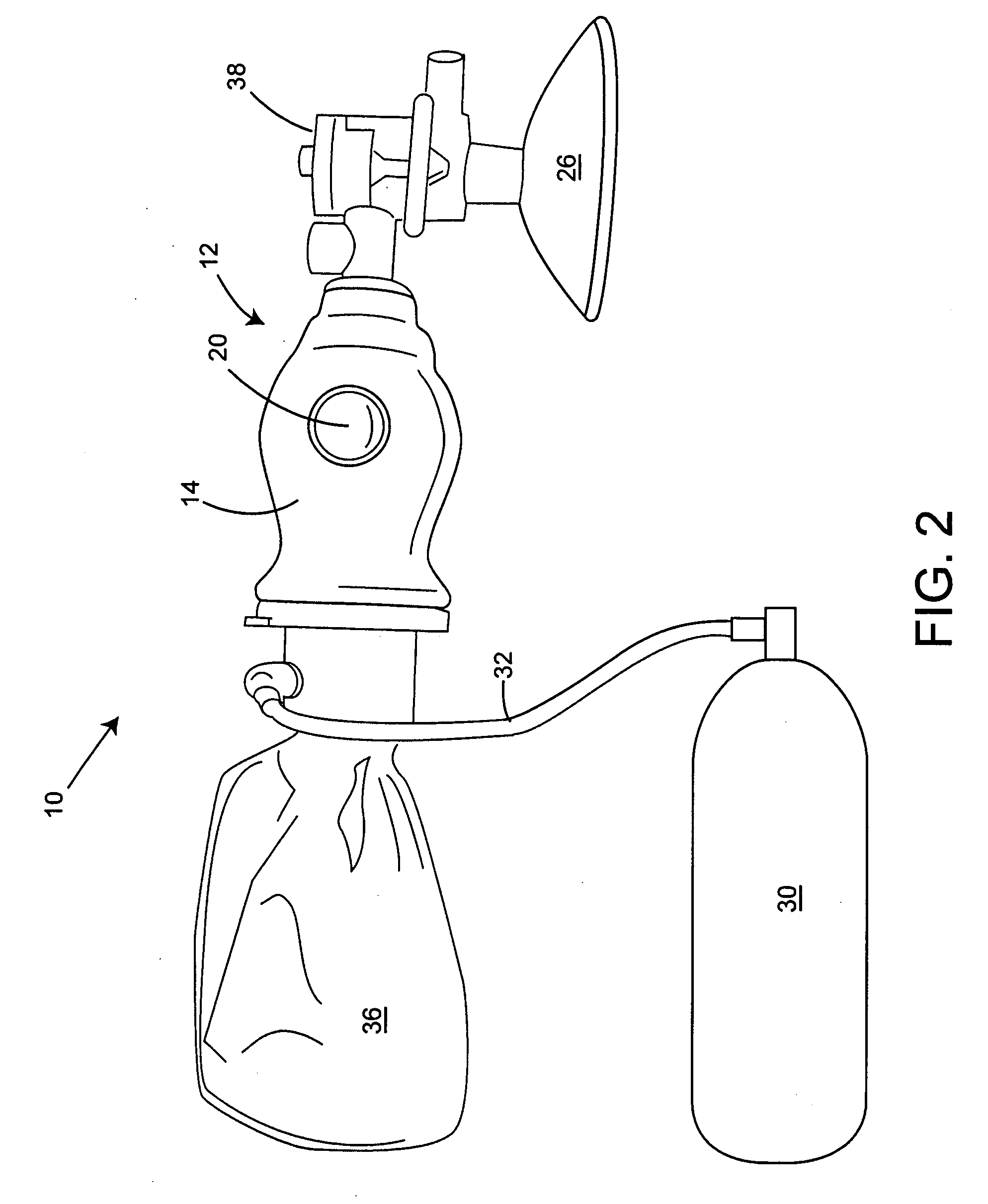Manual resuscitation device
a resuscitation device and manual technology, applied in the field of manual resuscitation devices, can solve the problems of inability to address the problem of inexperienced rescue personnel over inflating the patient's airway, ever present lung damage, and increase the peak airflow, so as to reduce the chance of rescue. the effect of a rescue person
- Summary
- Abstract
- Description
- Claims
- Application Information
AI Technical Summary
Benefits of technology
Problems solved by technology
Method used
Image
Examples
Embodiment Construction
[0021]The resuscitation device of the present invention, generally 10, is comprised of a manually compressible and resiliently expandable bag 12 that is constructed of an elastomer shell 14 having a generally uniform thickness. A breathable gas chamber 16 has a volume capacity to inflate the lungs of a human patient when bag 12 is sufficiently compressed. Bag 12 is preferably manufactured in a range of sizes to fully inflate the lungs of infants, children and adults.
[0022]Shell 14 includes at least one integral thin-walled compressible region and preferably two integral thin-walled compressible regions 18 and 20. These regions each have a wall, 22 and 24 respectively. The walls 22 and 24 have less resilience than the average resilience of shell 14 and a smaller thickness than the generally uniform thickness of shell 14. A user compresses bag 12 by squeezing compressible regions 18 and 20 towards each other. Since compressible regions 18 and 20 are softer and less resilient, it very ...
PUM
 Login to View More
Login to View More Abstract
Description
Claims
Application Information
 Login to View More
Login to View More - R&D
- Intellectual Property
- Life Sciences
- Materials
- Tech Scout
- Unparalleled Data Quality
- Higher Quality Content
- 60% Fewer Hallucinations
Browse by: Latest US Patents, China's latest patents, Technical Efficacy Thesaurus, Application Domain, Technology Topic, Popular Technical Reports.
© 2025 PatSnap. All rights reserved.Legal|Privacy policy|Modern Slavery Act Transparency Statement|Sitemap|About US| Contact US: help@patsnap.com



